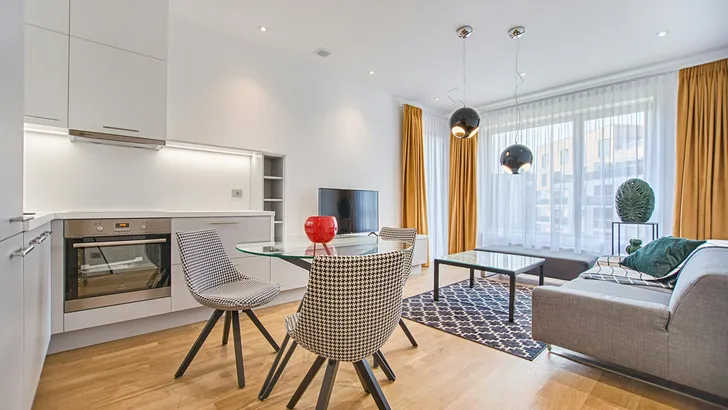This is how to bring peace and balance to your interior with the right colors
Home should feel like a warm hug after a long day, right? But honestly, if your interior exudes more chaos than calmness, coming home often feels like an added stressor. Fortunately, you can bring peace and balance to your home by making clever use of colors, shapes and symmetry. It sounds more complicated than it is, but don’t worry, we explain it all.
What does tranquility and balance in your interior mean?
Tranquility and balance are the holy grail of interior design. It’s all about creating a space where everything is perfectly coordinated without feeling too “organized.” Think of a balance between colors, furniture and decoration – just like a good outfit.
Symmetry
Symmetry is a classic. It gives structure and a sense of harmony. Symmetry and balance are the secret ingredients of a well-styled interior. They ensure that a space is not only beautiful, but also feels comfortable. They give peace of mind. Although they often go hand in hand, they each have their own role: symmetry brings order, while balance ensures that everything stays in balance. Even if it’s not perfectly even.
Symmetry is all about mirror images and equality. It gives a space tranquility and a sense of structure. There are two types:
- Bilateral symmetry is the classic style where both sides of the room are mirror images of each other. Think of two identical armchairs on opposite sides of a coffee table
- In radial symmetry, everything starts from a central point. Imagine a round dining table, with chairs arranged evenly around it
Symmetry often fits well with formal furnishings. But beware: too much symmetry can get a little boring. Break it up with something unexpected, like a playful piece of art or an eye-catching lamp.
What is balance?
Balance is the relaxed counterpart of symmetry. It’s all about balancing visual weight. This can be done in three ways:
- Symmetrical balance, like bilateral symmetry, a safe and elegant choice
- Asymmetrical balance, then you mix different elements with similar visual weight. A large sofa versus two small chairs? Perfect!
- Radial balance is all about a focal point, such as a chic chandelier over a round sitting area
Why are they important for your interior design?
A balanced room exudes tranquility and prevents it from feeling chaotic. Symmetry also plays into our brains, which love patterns and predictability. It provides a sense of comfort and harmony. Together, symmetry and balance create an interior that is not only visually correct, but one in which you feel completely at home.
What color schemes bring peace and balance to your interiors?
When it comes to colors, less is often more. Neutral tones such as beige, sand and light gray are your best friends. For example, a beige rug is a great base to keep your living room calm. Combine it with soft pastels or natural colors, such as olive green or terracotta, to create a warm atmosphere.
Try the 60-30-10 rule:
- 60% base color (beige walls or rug, for example)
- 30% secondary color (a soft pastel on pillows or curtains)
- 10% accent color (think a striking lamp or artwork)
What shapes go well together?
Balance is not only in colors, but also in shapes. Clean lines can feel chilly, while round shapes bring softness and coziness. A mix of both is ideal.
For example: combine a square sofa with a round coffee table. Or choose an oblong rug (like that beige one) and add round poufs. Round mirrors or pendant lights are also great ways to soften things up.
Tips to create peace and balance in your interior.
Ready to get started? Here are a few practical tips:
- Balance is not just about colors. Combine different textures such as a wool plaid, a linen sofa and a smooth ceramic vase. This adds depth to your interior without making it look busy.
- Every room needs an eye-catcher. This can be a large piece of art above the sofa or a stylish armchair in a striking color. Everything around it you build in balance.
- Nothing brings more peace than greenery. Choose easy plants like a Monstera or a Pancake plant. Put them in a corner where symmetry is not necessarily needed.
- Let your interior tell your story. Add personal details such as photos, mementos or heirlooms. Make sure these items fit within the color scheme so they don’t feel like clutter.
Creating peace and balance in your interior really doesn’t have to be higher math. It’s all about a good foundation (beige rug, anyone?), smart color choices and a little guts to play with shapes and textures.
Source: Pexels

